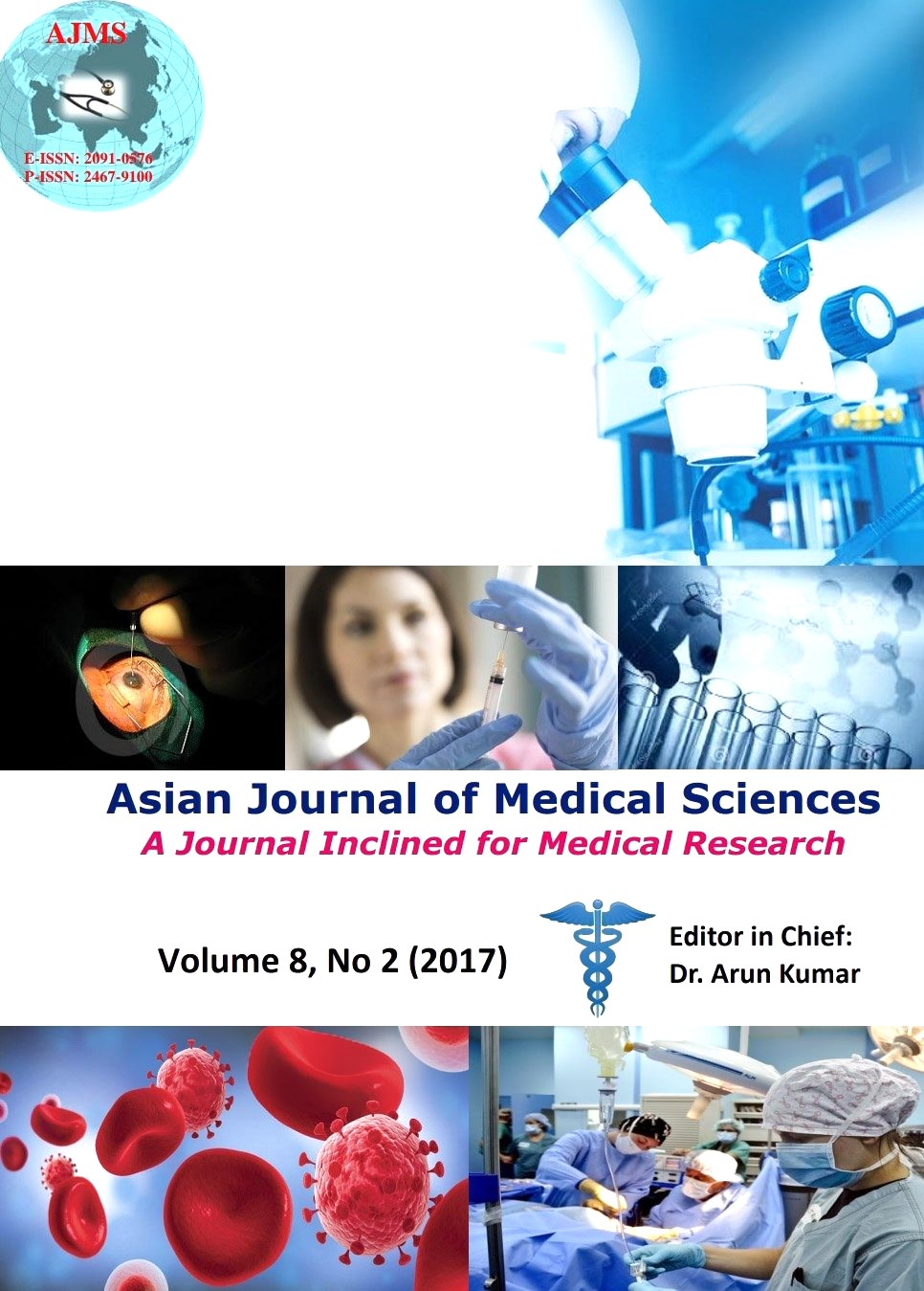Waist: Hip ratio is a more reliable risk assessment tool for acute myocardial infarction: A hospital based case – control study among rural Maharashtra, India
Keywords:
AMI, obesity indices, lipid profile, risk, odd’s ratioAbstract
Background: Worldwide, incidence of Acute Myocardial Infarction (AMI) has been increasing over the years and now reflected as the leading cause of death universally.
Aims and Objectives: To determine the strength and degree of association between obesity indices and serum lipid profile with incidence of AMI in rural Indian population.
Materials and Methods: Hospital based case-control study was conducted among newly diagnosed cases of AMI and matched controls. A total of 40 patients admitted in ICCU at rural tertiary care centre and equal number of healthy age/sex controls were enrolled in the study. Over the period of three months, by employing personal interview, anthropometric, clinical and laboratory examination information was obtained. Data were analysed by using SPSS version17 and results were expressed on Mean ± SD, Chi-Square test and Odds ratio.
Results: Mean age of cases and controls was 58.5 and 60 yrs respectively with mean difference of 1.5 years. Maximum, 47.5% cases were in age 60-69 yrs and shown 1.5 times risk of getting AMI. The Overweight, Waist- Hip ratio and hyperlipidemia (cholesterol, H:L ratio and triglycerides) were significantly associated with AMI (p < 0.05 at 95% CI) and risk predicted by odd’s was of 9.3, 3.4, 2.4, 4.8, and 9.4 respectively. Every unit rise in overweight, Waist:Hip ratio, serum cholesterol, LDL and triglycerides; the risk of occurrence of AMI increases by 1.7, 2.8, 1.02, 1.01 and 1.03 times respectively.
Conclusion: Study demonstrated, W:H ratio is a more valid, single, reliable risk assessment tool for AMI could be practiced at health care institutions as well as community surveillance.
Asian Journal of Medical Sciences Vol.8(2) 2017 38-43
Downloads
Downloads
Additional Files
Published
How to Cite
Issue
Section
License
Authors who publish with this journal agree to the following terms:
- The journal holds copyright and publishes the work under a Creative Commons CC-BY-NC license that permits use, distribution and reprduction in any medium, provided the original work is properly cited and is not used for commercial purposes. The journal should be recognised as the original publisher of this work.
- Authors are able to enter into separate, additional contractual arrangements for the non-exclusive distribution of the journal's published version of the work (e.g., post it to an institutional repository or publish it in a book), with an acknowledgement of its initial publication in this journal.
- Authors are permitted and encouraged to post their work online (e.g., in institutional repositories or on their website) prior to and during the submission process, as it can lead to productive exchanges, as well as earlier and greater citation of published work (See The Effect of Open Access).




